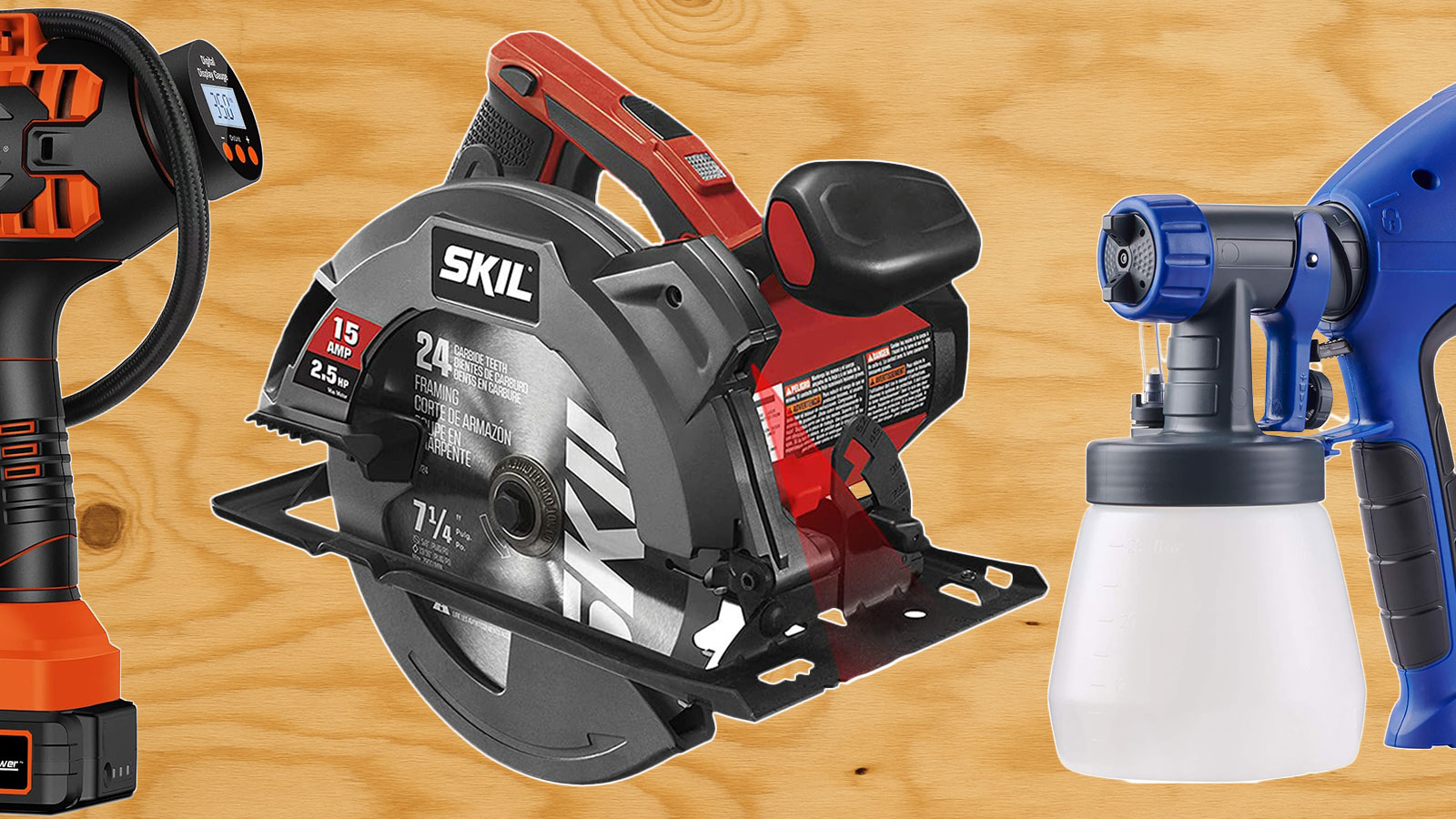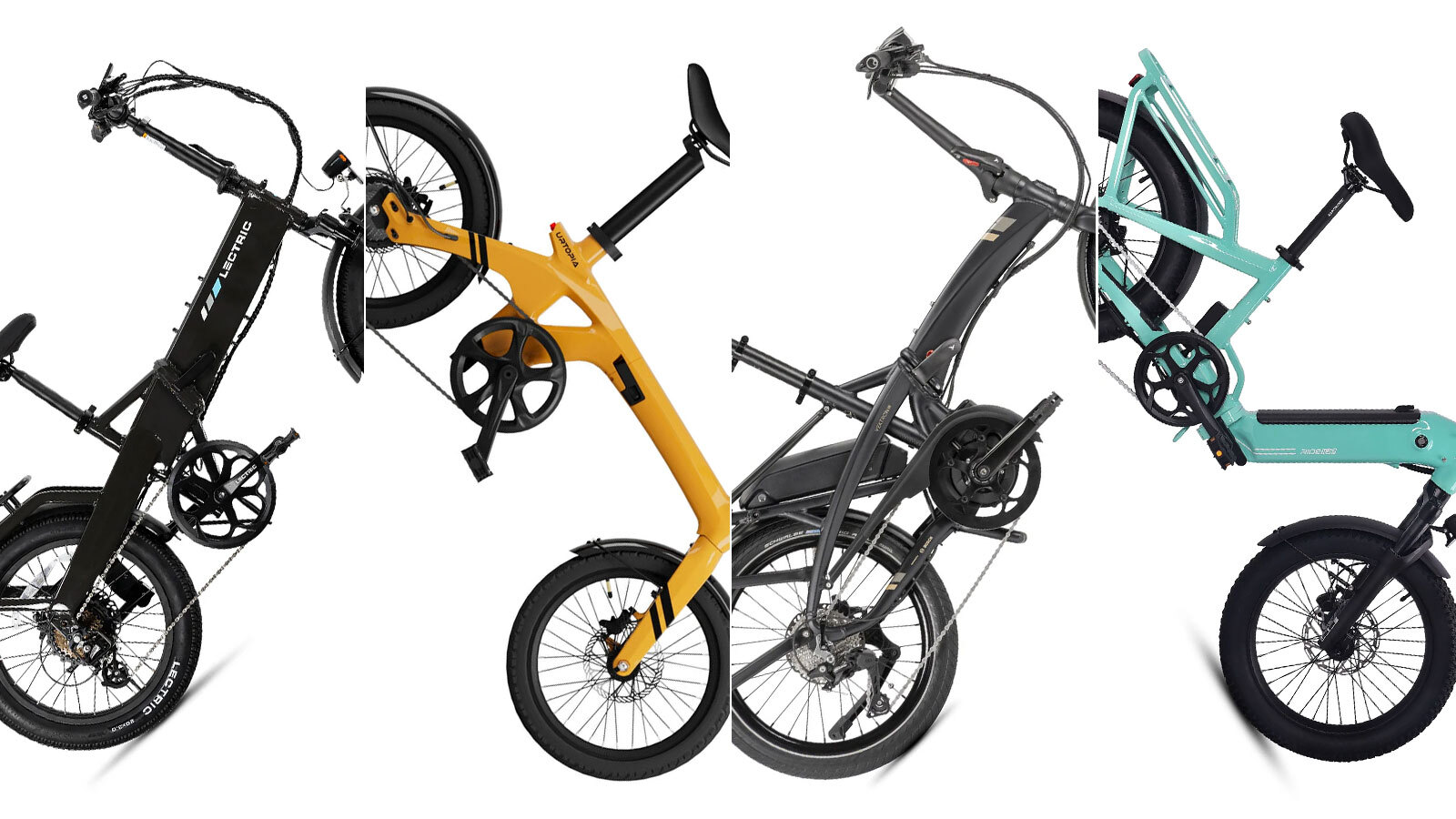9 power tools every home should have and when to use them
Every home improvement project is simpler when you have a well-rounded selection of tools at your disposal. The post 9 power tools every home should have and when to use them appeared first on Popular Science.

Sooner or later, every homeowner faces things they need to fit or fix. That almost invariably means the need for one or more power tools. On the plus side, there is plenty of choice. The shelves of hardware stores are filled with a bewildering array of devices designed to solve just about every problem. On the other hand, unless you have an unlimited budget (and a lot of space in the garage), you’ll want to pick and choose the essentials. For those with limited experience, deciding how to get the best bang for their buck can be challenging.
The following nine power tools range from the absolute basics for those who simply want to hang a few pictures or put up shelves to those for the more enthusiastic DIYer who is happy to take on bigger challenges. They’re the ones I’d pick first (alongside a good pair of safety glasses), and I’ve picked up a lot of tools. We’ve explained why you want to have each in your toolkit and provided examples from popular brands.
Power tool platforms
Before we get to the individual power tools, it’s worth spending a few minutes talking about platforms, sometimes called ecosystems. In other words, buying most, if not all, of your tools from the same brand often makes sense. This applies to cordless tools rather than corded ones, but since the former now dominate the market, it’s an important aspect of power tool choice.
The first power tool you choose, let’s say it’s from Ryobi, will probably come complete with a battery and charger. Next time, if you buy another Ryobi, you’ll be able to save money because you already have a compatible power unit and ‘bare’ tools (those without a battery or charger included) are cheaper.
If you buy from a different brand, let’s say DeWalt, your Ryobi battery won’t fit. So, you have to buy DeWalt’s versions. Buying multiple tools from different brands soon adds up. Currently, a Ryobi battery and charger are around $60. A similar combination from DeWalt is $57. If, later on, you buy another tool from Bosch or Makita, for example, you would soon be spending a couple of hundred bucks just on power sources. All those different units also become frustrating to deal with.
So, sticking with one platform makes financial sense. The key question then is which one? Some brands are known for their affordability at the DIY end of the market. Others are recognized as favorites with contractors and other professionals, but come with a higher price tag. There’s no easy answer. You need to consider brand reputation, the range of compatible tools on offer, and your budget. We’ll talk about that a little as we go through our list of power tools every home should have, but it’s a good idea to do some additional research before you make your decision.
An alternative solution is to buy battery adapters. From Ryobi to DeWalt, for example. However, most cost around $15-$20, add to the bulk of the tool, and could impact performance. If you’re adding what you feel is a must-have tool from a different brand to your main platform, they may be worth considering, but otherwise, you no more want a handful of different adapters than you want a bunch of different batteries and chargers. As for what you do want, read on …
The top power tools every home should have
A cordless drill/driver
DEWALT 20V Max Cordless Drill/Driver Kit
This should be the first power tool on everybody’s list. A whole host of tasks around the home involve drilling holes or driving screws. Hanging pictures, fitting shelves, putting together RTA (ready to assemble) furniture, fitting curtain rails, etc. Some 12-volt models are lightweight, compact, and ideal for basic DIY. More powerful 18/20-volt models are a good all-around tool that will find a multitude of uses around the house, garage, and yard. Incidentally, 18V and 20V drill drivers are effectively the same in power terms. Electric motors briefly produce more output when they start, then they settle down to a normal running level. Some manufacturers chose to quote the startup voltage (20V), and some the running voltage (18V).
Cordless drill drivers generally offer variable speed adjusted by trigger pressure, though some have two speed ranges. They have adjustable torque settings so you can control the amount of power when driving screws. There will also be a forward and reverse switch. Many include an LED worklight on the front. Chucks are keyless, and the size is usually a general indication of performance. 12V models usually have a 3/8” chuck, whereas 18/20V models commonly have a 1/2” chuck.
Our top pick is the DeWalt 20V Max Cordless Drill Driver Kit. DeWalt has an outstanding reputation for reliability and durability. Their high-performance power tools are often favored by professionals and enthusiastic amateurs who are willing to invest in quality. Usually, they come with premium prices, but at $99, this kit offers outstanding value. It’s not their latest model (which costs around $160), but it’s a pro-grade tool for DIY on a budget.
Oscillating Multi-Tool
ONE+ 18V Cordless Oscillating Multi-Tool Kit
Given the name, it will come as no surprise that this power tool provides unrivaled versatility. Although functions may vary slightly between different brands, they will typically offer various blades for wood, drywall, plastic, and metal. Flush-cutting blades can be particularly useful, allowing you to cut where it would be difficult for either hand or powered saws to reach. Perfect for undercutting door frames when fitting flooring, for example. The plunge-cutting ability is great for making holes in drywall for fitting sockets, switches, or providing access for cables or pipework.
Oscillating multi-tools can also be used for grout removal, and a sanding head is usually included. These compact tools are easy to handle and great for reaching tight spaces. The rapid oscillating action allows for fast material removal. Still, because the head only moves a very short distance, it doesn’t throw dust and debris all over the place and thus makes for easier cleanup.
In this category, we chose the Ryobi ONE+ 18V Cordless Oscillating Multi-Tool Kit. As is expected from the brand, it offers a competitive feature set while remaining competitively priced. It’s currently $99 at The Home Depot with a battery included, although a charger is not. Two blades and a sanding head are included, with further cutting options available at extra cost.
Hand-Held Circular Saw
SKIL 15 Amp 7-1/4 Inch Circular Saw with Single Beam Laser Guide
Several types of saws could top the power tools list for every homeowner, and a jigsaw wouldn’t be a bad option. However, the circular saw is probably the best option for the kind of tasks inexperienced DIYers are likely to be faced with first. A common challenge for beginners is keeping the cut going in a straight line, and that’s where a circular saw wins over a jigsaw every time. They have the capacity to cut through a variety of common lumber sizes bought at the hardware store, along with plywood and other sheet materials. The head can be tilted, so it’s also possible to make angled cuts. Just about every professional framer and jobsite carpenter will own a circular saw.
This is one area where corded tools are still popular and can be very affordable. That doesn’t mean they’re short on features. A sprung guard protects the blade when not in use, and these are sometimes hooked up to trigger safety switches so the guard only retracts when the saw is turned on. Many models have laser guides and/or dust blowers that make it easier to follow a cut line and thus ensure accuracy. A general-purpose 24-tooth blade is generally included.
A tool from Skil is perhaps the obvious choice in this section, as the brand claims to have invented the first circular saw back in 1924. The Skil 15-Amp 7-1/4 Inch Circular Saw is typical of the capacities and features offered by this type of tool and is available from Amazon for just $59. The cordless model costs $89.99 but only has a 6-1/2 inch blade, reducing cutting capacities.
Random Orbital Sander
BLACK+DECKER Orbital Sander
As with saws, a wide variety of sanders are available, but the random orbital sander is likely to be the first power tool choice for most homeowners. They are ideal for stripping paint and varnish off old furniture and can make the surfaces silky smooth for refinishing. Of course, it’s equally good at preparing new wood. The main feature of these power tools is the random orbital action. At the same time as providing a circular motion, the sanding pad also moves backward and forward. This makes it very efficient at cutting through different materials. The action also leaves fewer scratch marks than other sanders (that usually operate in straight lines), so you can achieve a smooth finish more quickly.
Most random orbital sanders are relatively lightweight and easy to use. A firm grip may be needed when using coarse sandpaper (low numbers) when removing old paint, for example, but control is much easier with fine sandpapers (high numbers) used for achieving a smooth finish. Ergonomic grips are one feature to look for, as is dust collection (some kind of filter/bag is usually included). Sanding disks usually attach by hook and loop. You can save money by buying abrasives on a roll and cutting to size.
Our chosen power tool this time comes from Black+Decker, a brand that many will recognize. It’s another that ranks highly in terms of value for money for the homeowner. The Black+Decker 5-Inch Orbital Sander was $43 when this article was written, the low price in part because this is another corded tool. There’s nothing fancy about it, but it’s a good choice for the beginner looking for a good all-rounder. The cordless model is $74.99 but does include a battery and charger.
Sawzall (Reciprocating Saw)
M18 FUEL 18V Lithium-Ion Brushless Cordless SUPER SAWZALL Orbital Reciprocating Saw
Strictly speaking, these are reciprocating saws, but in the same way that Hoover is commonly used for vacuum cleaners, Sawzall has become the common name for these power tools. Where oscillating multi-tools are your light-duty cutting option, this is the tool you need for heavy-duty sawing through almost everything you can think of. Depending on the blade, it can cut wood, plastic, drywall, metal, and even concrete. For the renovator and remodeler, it’s a terrific demolition tool. If you want to repurpose old pallets, you can chop through them without worrying about hitting a nail. It can also prune shrubs and trees, so it does offer a lot of versatility.
Reciprocating saws are powerful tools, and a firm grip is often required. A D-handle at the back provides good control, and there’s space on the body for a supporting hand when needed. Speed is varied by trigger pressure, and some top models include a switchable orbital motion for even more aggressive cutting. A foot, which may be adjustable, guides the blade, and blade changing itself is usually tool-free. Cordless models often have an LED work light. It’s worth considering weight, as a heavy saw can be tiring to use for long periods.
We chose to feature the Milwaukee M18 Cordless Super Sawzall because, as with Skil and the circular saw, Milwaukee invented this type of power tool. The brand is up there with DeWalt in terms of high performance and reliability, and is often chosen by professionals. As a result of that exceptional quality, this tool with a battery and charger costs over $400. Those whose budgets don’t stretch to that might want to consider the corded model offered by Bosch, which can be found on Amazon for $99.
Brad Nailer
18V Brushless Cordless 18-Gauge 2-1/8 in. Brad Nailer
A brad nailer is another tool that can fulfill various needs, from crafting and furniture making to fitting baseboards and door casings. Brad nailers typically fire an 18-gauge (sometimes 16-gauge) nail with an almost negligible head. This helps reduce splitting, and the entry hole can usually be hidden with a dab of filler. A brad nailer is capable of firing several nails per minute, and with a little practice, users can be both fast and accurate.
Brad nailers should have adjustable pressure so the nail can be driven at different depths into different materials (for example, oak is much harder than pine, so more driving pressure would be needed). Better models should make this as easy as possible. All nailers jam from time to time, so a quick-release mechanism is worth having. You’ll likely be using the brad nailer at different angles and possibly for extended time periods, so weight is a factor. Also, check the range of nail lengths the gun can accommodate, as they do vary.
Ridgid is a brand known for high-quality tools without the price tags associated with DeWalt and Milwaukee. The Ridgid 18V Cordless 18-Gauge Brad Nailer has an impressive feature set, including trigger-activated or sequential firing (a nail is fired when you bump the nose against the workpiece). It costs $199, but while cheaper models are available, the Ridgid represents a tremendous balance between price and performance.
Paint Sprayer
HomeRight 2412331 Quick Finish HVLP Paint Sprayer Power Painter
Paint projects crop up all over the home and yard. Walls, decking, and fences are major projects, but you might also be reviving old furniture (indoors or out), making cabinets or cupboards, or changing the color of the doors. They are equally useful for small craft projects. A good spray gun is a lot faster than a brush or roller and leaves a smoother finish. They can apply stains and varnishes as well as paints.
Plug-in models are inexpensive and use HVLP (high volume low pressure) technology to deliver a fine mist that is easier to control and reduces waste. Nozzles allow the spray patterns to be adjusted to suit the task, and there’s also flow control. Not surprisingly, these power tools are very popular, though some complaints are that they spit or splatter and spoil the finish. The problem is usually that the sprayed product has not been thinned correctly, which is sometimes necessary. It’s a simple process, and instructions should be provided. These power tools are relatively uncomplicated, making them easy to clean after use. Remember always to wear a mask and goggles when spraying.
The HomeRight Quick Finish HVLP Paint Sprayer has all the expected features and costs just $49.99 at Amazon. It is among the more basic models with just a single air cap, but it is regularly rated as the best budget paint sprayer in independent reviews. Those homeowners looking for more power and control might want to check out the highly regarded Graco Magnum instead.
Shop Vac
CRAFTSMAN CMXEVBE17250 2.5 Gallon 2.5 Peak HP Wet Dry Vac
DIYing tends to create a lot of dust and debris. You could use your household vacuum cleaner to clear it up, but it’s not really made for the job. There’s a risk of clogging the filters, and that in turn could stress the motor or cause it to overheat. A shop vac, on the other hand, is designed for the purpose. They are usually more robust, can often handle both wet and dry cleaning, and can be very affordable.
Most of these power tools are little more than a motor and a bucket with a bag in it (or not, when used to clean up spills). This simplicity means there’s little to go wrong, so durability is good. Low-cost models generally have just a few different attachments, which are conveniently stored on board. Accessory sets are often available but may not be necessary for beginner DIY enthusiasts. Shop vacs can vary in size from around 2-1/2 gallons right up to 12 gallons. Most have a carry handle, and larger models have casters.
Craftsman is another of those brands many will recognize and is known for quality with affordability. The 2-1/2-gallon Craftsman Wet and Dry Vacuum is a lightweight, uncomplicated tool that’s great for cleaning up sawdust and dirt around the home and garage and is also handy for vacuuming inside vehicles. It costs only $51.15. More serious DIYers looking for something with higher capacity and more power will want to consider the 5-gallon model from Vacmaster Professional.
Tire Inflator
Avid Power Tire Inflator Portable Air Compressor
This may be the last power tool on our list, but certainly not the least in terms of usefulness. It’s not just indispensable for the occasional flat on your car, truck, or motorcycle, but also bicycle tires, sports balls, and all kinds of leisure inflatables, from kiddie pools to kayaks.
These are typically tools that plug into the 12V DC socket inside your vehicle or have a mains plug, but convenient cordless models are increasingly available. They are usually supplied with a variety of nozzles. On better models, you can set an automatic shut-off pressure so you don’t need to keep watching the gauge. Tire inflators usually have a maximum recommended tire size, so it’s important to check that a particular model is suitable for your vehicle. It’s also a good idea to check the accuracy of the gauge.
The Avid Power Tire Inflator is an unusual design in that, at first glance, it looks a lot like a cordless drill. This makes it particularly compact, so it’s easy to store when not in use. It runs off a 20V battery or a 12V DC socket. It has a digital gauge and an LED lamp for working in the dark. It’s currently $59.49. There are less expensive options, but judging by Amazon ratings, there are few rivals when it comes to customer satisfaction.
The post 9 power tools every home should have and when to use them appeared first on Popular Science.

































































































































































